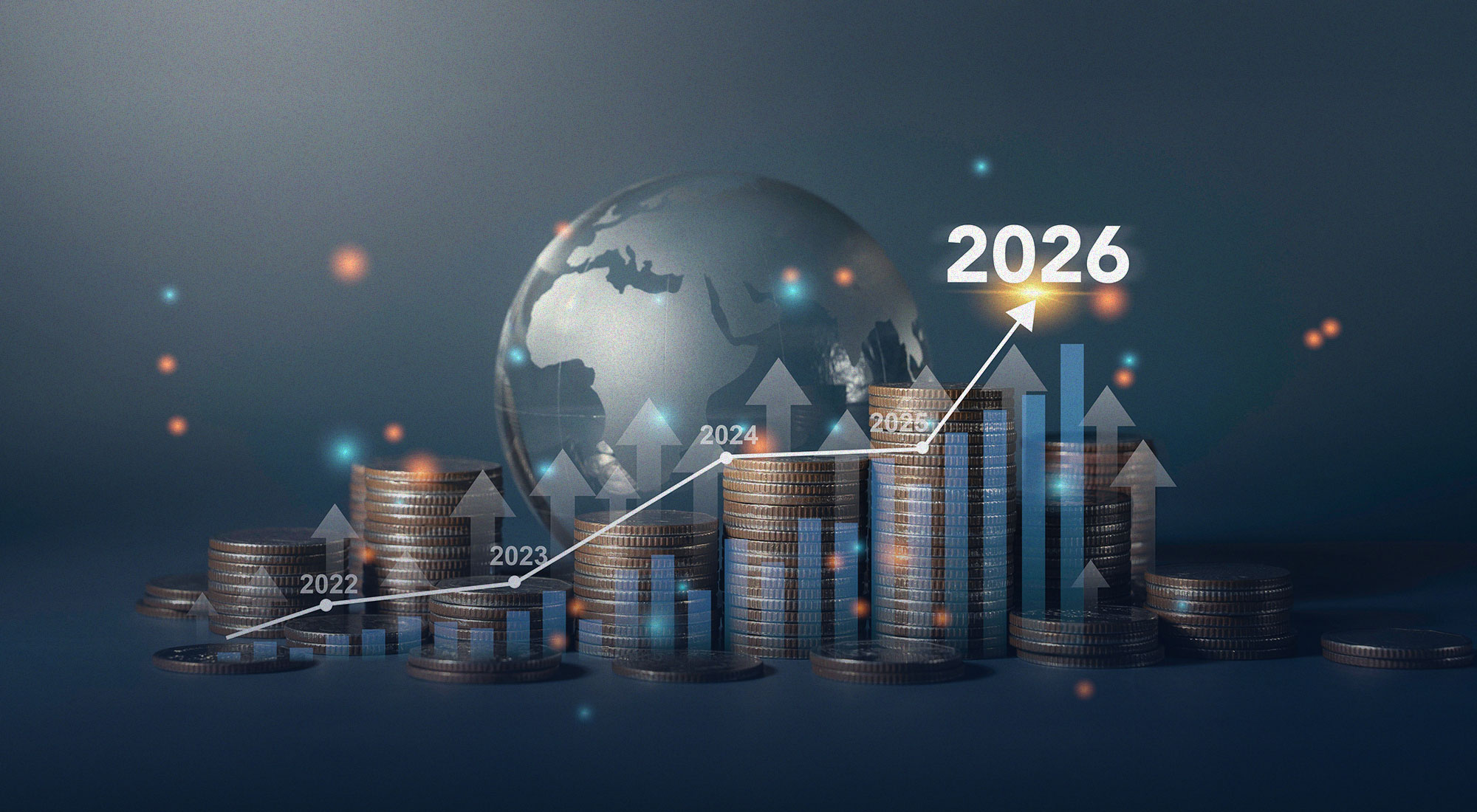Introduction
The coronavirus outbreak is, without doubt, the most important development in the global oil market. This has led to many other offshoot developments such as the collapse of the global oil demand, the mushrooming of the oil glut, the oil price war, the OPEC++ production cut agreement, the collapse of the WTI oil price below $1 a barrel and the ramifications of China’s emergence from the lockdown much earlier than other major powers.
The outbreak could go into history as the most destructive event that has hit the global economy since the Great Depression of the 1930s. Its adverse impact could be even bigger than the Great Depression.
The International Monetary Fund (IMF) is projecting that the global gross domestic product (GDP) will shrink by 3 percent this year from a projected 3.3 percent before the coronavirus outbreak to 0.3 percent. The US GDP could contract by 11 percent in the fourth quarter of 2020 year-on-year while the European Union’s economy is projected to shrink by more than 7 percent this year.
Estimates of the damage to the global oil demand vary but they virtually agree that the glut in the market has mushroomed to an estimated 1.8 billion barrels between globally-stored oil and excess supply in the market and the global oil demand has declined by an estimated 30 million barrels a day (mbd) with oil prices crashing to mid-$20s.
However, a positive sign is China already bouncing back extremely quickly in all sectors. This development will give a huge impetus to an oil market bereft of good news and may also prevent oil prices from sliding further downward.
The global oil demand collapse
If anything, the coronavirus outbreak with its destructive power has proved irrevocably how inseparable oil and the global economy are as the destruction of one automatically destroys the other. Furthermore, there could neither be a global economy nor a modern civilization, as we know and enjoy, without oil and gas. The global economy operates on oil and gas and will continue to do so throughout the 21st century, probably far beyond.
While energy intensity (meaning energy required to produce a dollar of global GDP) has been declining with technological advances, conservation, and efficiency, a decoupling of energy needs from economic growth, will never happen.
The global economy can’t reconcile itself with low oil prices because the main ingredients that make up the global economy, namely, global investments, the oil industry, and the economies of the oil-producing countries, will all be undermined.
While it is true that low oil prices could reduce the cost of manufacturing, thus helping the global economy to grow, it is a short-term benefit as this is vastly offset by a curtailment of global investment which forces companies around the world to cut spending, sell assets and make thousands, if not millions, of people redundant.
High oil prices invigorate the global economy by stimulating global investments, enabling the global oil industry to balance its books and also enhancing the revenue of oil producers thus enabling them to cut their budget deficits and invest in oil exploration and expansion in production capacity.
A fair price for oil ranges from $100-$120 a barrel. Such a price range could be within reach in the next five years underpinned by growing global oil demand and a major decline in the oil industry’s investments. Globally, oil majors are deferring as much as $131 billion worth of oil and gas projects slated for approval in 2020.
This will constrain global oil supplies and make it difficult to meet demand thus exerting strong upward pressure on prices. This will give the Gulf oil producers a breathing space to implement an extensive diversification of their economies. The majority of OPEC producers need oil prices ranging from $85-$100 a barrel to balance their budgets (see Chart 1).
Chart 1
OPEC Median Budgetary Breakeven Price

Source: OPEC “Break-even” Prices (Courtesy, Matthew Hulbert/European Energy Review).
The oil price war
With prices falling by more than 50 percent since hitting $60 a barrel in January, OPEC+ met on the 6th and the 7th of March to discuss new production cuts or deepening existing ones. Saudi Arabia called for deeper cuts amounting to 1.5 mbd at a time when Libya’s oil production had already lost 1.0 mbd.
Russia refused to agree to deeper cuts arguing that OPEC’s proposal for cuts of 1.5 mbd would be “a drop in the ocean” in a market where oil demand is plunging fast. Considering that oil demand was at the time plunging by 15 mbd and could reach 20 mbd in the coming weeks, influencing the market with the cuts proposed by OPEC would have been impossible.
Russia’s refusal was the last straw that resulted in a price war with Saudi Arabia, which flooded the global oil market. The refusal was based on its domestic oil industry circumstances. Russian oil companies couldn’t switch off oil production at their oilfields as easy as US shale oil for instance.
Moreover, any cuts would have no impact on oil prices without the United States doing its bit, which it would not. The US shale oil industry has been gaining more market share at the expense of OPEC+ producers.
Moreover, Russian oil companies have always been against any production cuts by OPEC+ arguing that they have invested heavily in expanding Russia’s oil production capacity and therefore they wanted a quick return on their investments. They also argued that OPEC+ cuts would have extended a lifeline to a sinking US shale oil industry.
A price war neither benefits Russia nor Saudi Arabia given the circumstances and is likely to harm Russians less than Saudi Arabia. These two are very different economies, driven by different geostrategic interests beyond oil.
The value of the ruble against the US dollar plays its part too. Russian oil companies earn dollars and other hard currencies for their exports but pay for their operations in the ruble. The lower the ruble slides against the US dollar, the lower the production costs of Russian oil companies.
Crude oil prices have more than halved since hitting $60 in January and were expected to even fall to $20 a barrel while the coronavirus was raging with oil majors even preparing for $10 oil (see Chart 2).
Chart 2

Source: Investing.com accessed on 18 April 2020
Saudi Arabia called for an emergency meeting of OPEC+ on the 9th of April. OPEC+ agreed on production cuts of 10 mbd with another 5 mbd coming from G20 producers such as Norway, Mexico, Brazil, and Canada. President Trump refused to announce cuts saying that only free markets will determine the US production cuts. Put bluntly, he isn’t going to agree to any cuts.
Will OPEC+-led global cuts work?
The global oil market has already given its verdict on the OPEC+ production cut agreement. Oil prices dropped. Production cuts, no matter how big they are, will hardly have a positive impact on oil prices while the coronavirus is still raging. They could only help prices once the global lockdown starts to ease.
How could a 10 mbd or even a 20 mbd cut impact positively on prices in a market sagging under the weight of a huge glut and demand declining by 30 mbd?
Against this backdrop, the OPEC+ deal is unable to engineer an immediate rebound in prices. “There is no feasible agreement that could cut supply by enough to offset such near-term demand losses,” the International Energy Agency (IEA) said. Therefore, a V-shaped recovery is not possible before 2021 (see Chart 3).
Even assuming that the travel restrictions are eased in the second half of the year, the latest data from IEA projects that global oil demand in 2020 could be 8.6 mbd lower than the 2019 level. Still, it could take demand until 2021 to recover to 2019 levels.
However, some bullish factors are supporting the recovery of oil demand and prices. These factors include a steep decline in the US shale oil production, a gradual easing of the global lockdowns, the implementation of OPEC+-led production cuts, China’s bouncing back at full speed and the prospect that the global glut is starting to decline possibly pushing the oil market into deficit as early as June.
As a result, oil prices could hit $40-$50 a barrel in the second half of this year and touch $60 in early 2021.
Chart 3
Global Oil Demand Growth, Y-o-Y

Source: Oilprice.com (accessed on 25 April 2020)
The collapse of the WTI oil price to negative
The recent collapse of the WTI price is a unique American affair. Still, its collapse was very unusual. US shale oil producers have been facing unusual problems, namely rising outstanding debts almost reaching one trillion dollars, inability to export their oil, or selling it at home because of the current circumstances and lack of their storage.
Renting storage outside would have cost them far more than the contract price for their oil in the current situation. So, they had to either give it away or sell it at any price.
US shale oil producers have been for years taking advantage of OPEC+’s production cuts to enhance their market share at the expense of OPEC+ members by producing excessively even at a loss and undermining OPEC+ efforts to support oil prices by trying to cap them. Shale oil producers didn’t even spare a thought for other oil-producing nations of the world whose livelihood they have trampled on for years with the full knowledge that US taxpayers will bail them out even when their outstanding debts are heading towards $1 trillion.
They had a chance recently to redeem themselves by agreeing to cut production and join OPEC+ efforts to stabilize oil prices but they adamantly refused. They paid for their greed and obstinacy by the recent collapse of the WTI crude oil price to less than $1 a barrel.
Still, left to their own devices, US shale oil producers will continue producing even at a loss having learned nothing from the recent meltdown of the US shale oil industry.
However, a slowdown in production is being forced on them. The US Energy Information Administration (EIA) has been accused of disguising disastrous data on the decline in shale oil production when latest research by the respected US energy expert Philip Verleger showed a decline of 4 mbd by the 10th of May at a time the EIA is projecting a 0.5 mbd decline in 2020 (see Chart 4).
Chart 4
 Source: PK Verleger LLC
Source: PK Verleger LLC
How could it be otherwise when the shale industry continues idle drilling rigs at a tremendous rate, and the rig count is down by more than half in two months. Still, shale oil will survive the coronavirus ordeal but it will be on a life support machine provided by the US taxpayers.
However, even the taxpayers will eventually see the futility of continuing to support a bankrupt industry.
President Trump is considering imposing a tariff on foreign crude oil exports to the United States to bail out the US shale oil industry at the expense of foreign oil producers. But this ploy may not work since major oil exporters could shift all their exports to the Asia-Pacific region rather than pay the tax.
China to the rescue
China is bouncing back extremely quickly in all sectors with projections already abound that the country could grow at 6.8 percent in 2021 compared with 6.1 percent in 2019.
Given the speed by which China is bouncing back, it could be projected to grow at 4 percent-5 percent in the second half of this year compared with 3 percent-3.5 percent in the first half. Moreover, China will be hugely thirsty for crude oil.
Every crisis offers opportunities, including this one. China is seizing the opportunity of super-low oil prices to expand its strategic oil reserves before prices rise again. It is also stocking up on cheap LNG.
Bloomberg has reported that 117 very large crude oil carriers (VLCCs) are on their way to Chinese ports bringing some 234 million barrels of crude oil bought in April when oil prices were around $25 a barrel or less. This could save China an estimated $8.2 billion as a price difference between $60 in January to $25 in April.
Despite the outbreak, China’s crude oil imports in the first four months of 2020 averaged 10.11 mbd and were slightly higher than the same period of 2019.
The illusion of an imminent global energy transition
Despite its catastrophic ordeal, the oil will continue to reign supreme throughout the 21st century and probably far beyond.
Four pivotal realities will govern the global energy scene well into the future. The first is that there will be no post-oil era throughout the 21st century and far beyond. It is very doubtful that an alternative commodity, as versatile and practicable as oil, particularly in transport, could replace oil in the next 100 years and beyond.
The second reality is that there will be no peak oil demand either. While an increasing number of electric vehicles (EVs) on the roads coupled with government environmental legislation could slightly decelerate the demand for oil, EVs could never replace oil in global transport throughout the 21st century and far beyond.
The third reality is that the notion of an imminent global energy transition from oil and natural gas to renewables is an illusion. That remains the case despite being challenged by serious environmental policies and despite a global expenditure of $ 3.0 trillion on renewable energy during the last decade (see Chart 5).
Chart 5

Source: International Energy Agency (IEA)
The fourth reality is that oil and gas will continue to be the fulcrum of the global economy and the core business of the global oil industry well into the future.
Competing interests of major players
OPEC, Saudi Arabia, Russia, the United States, and China are the major players in the global oil market. Developments in the market after the pandemic could enhance the position of some major players while undermining others.
(1) OPEC
OPEC will emerge stronger in the aftermath of the coronavirus outbreak with the world acknowledging the pivotal role it plays in ensuring the stability of the global oil market and prices grudgingly accepted even by the United States.
And while OPEC members tend on the whole to abide by the production cuts, this is not the case with non-OPEC producers like the United States, Russia, Norway, Mexico, and Brazil who grudgingly accepted to join OPEC+ production cuts.
(2) Russia & Saudi Arabia
Russia and Saudi Arabia in their respective capacities as the world’s largest crude oil producer and the world’s largest crude oil exporter will always compete for market share. Yet, they will cooperate where they see mutual benefits. Russia’s oil strategy is to consolidate and increase its market share in the two markets that matter to it, namely China and the European Union (EU). Saudi oil strategy is to enhance its market share in these markets at the expense of Russia.
In China, Russia has been gaining market share at the expense of Saudi Arabia first because China has vested strategic interests in Russia and because Russian piped oil exports to China are cheaper than Saudi shipped oil exports particularly at a time of rising shipping rates. Russia retains the same advantage in the EU for its oil and gas exports. Still, both Saudi Arabia and Russia share one major objective, namely the elimination of the US shale oil industry from the market.
However, once global demand accelerates, Saudi Arabia will be aiming for higher prices in preference to market share for two reasons. First, it will badly need to replenish its financial reserves very quickly and also cut the budget deficit drastically. The second reason is that to aim for market share, Saudi Arabia will have to dip into its stored oil, and once this is depleted it will not be able to take advantage of the future higher prices.
(3) The United States
As a result of the inevitable decline in shale oil production, the US crude oil imports are projected to rise from an estimated 9 mbd in 2019 to 11-12 mbd in the next three years.
While the US oil and gas industry contributes 8 percent to the United States’ GDP compared with 30 percent for Russia and 50 percent for Saudi Arabia, the role oil plays in the US economy through the petrodollar is even more intrusive than in the economies of Russia and Saudi Arabia. The petrodollar underpins the United States’ financial system and economy.
Today, the petrodollar is the core of the US financial system. Undermine the petrodollar and you undermine the entire US financial system and the US economy. China is aiming to dethrone the petrodollar and replace it with the petro-yuan as the world oil currency.
(4) China
China will continue to be the uncontested driver of both the global economy and the global oil market well into the future. There is growing optimism that once the outbreak is contained, the global economy and China’s, in particular, will behave like a patient who has been quarantined with no food.
Once out of the quarantine, his appetite would be rapacious and this is exactly how the global economy and the global oil market will react with oil imports doubling if not tripling to recoup lost demand. Oil prices and demand will recoup all their previous losses with prices eventually touching $50-$60 a barrel in early 2021.
(5) The global oil industry
The global oil industry will emerge leaner from this ordeal but it will have no alternative but to cut dividends drastically if it is to survive rather than sink under the weight of its outstanding debts. It will most probably opt for cutting dividends with Royal Dutch Shell leading the way forward by cutting its dividends for the first time since 1945.
Moreover, the global oil and gas industry is set to see its total annual revenues plunge by a whopping $1 trillion from $2.47 trillion in 2019 to $1.47 trillion this year. The projection for 2021 is $1.79 trillion. This means that the industry will have to focus all its resources on its core business, namely oil and gas.
Is it time for new world order?
The coronavirus outbreak may have sharpened the race for the next world order and who will emerge the dominant power of the 21st century. The extraordinary measures China has taken under the leadership of President Xi Jinping have enabled it to control the outbreak and open the country to business again.
Instead of praise, the bashing of China particularly in the United States continues unabated amid accusations that China should be made accountable for intentionally misleading the world about the fact that human transmission of the coronavirus was taking place and allegedly impeding US efforts to prevent its spreading into the United States.
There were even calls for the US Congress to legislate to strip China of its sovereign immunity and allow unemployed people and the businesses that have been devastated to sue China for damages. However, China will ignore such allegations and will retaliate against any action taken to hold it responsible for the pandemic.
And while the coronavirus outbreak might show an aspect of rivalry between the United States and China, their rivalry goes far beyond whoever recovers first from the monstrous coronavirus. It is not just about the next world order and who will emerge as the dominant power in the 21st century but also about the petro-yuan supplanting the petrodollar as the oil currency of the world.
The inevitable rise of China is being underpinned by the fact that it is currently the world’s largest economy based on purchasing power parity (PPP), the world’s largest importer of crude oil, the growing importance of the petro-yuan, the Belt and Road Initiative (BRI) and the Russian-Chinese strategic alliance which will lead the new world order in the 21st century.
The BRI has enabled China to integrate its economy in the global trade system far more than the United States’. Moreover, by offering loans and helping most countries of the world modernize their infrastructure and starting wealth-creation projects, China’s economy is benefiting immensely by expanding the market for its global trade.
Conclusions
The coronavirus outbreak is a unique event that will change the way we live in more ways than one. Developments in the market could enhance the position of some major players while undermining others.
And while the global oil demand will face a steep uphill struggle to recoup lost ground, it will start to recover its losses from the second half of this year with help from a China bouncing back extremely quickly from its ordeal with oil prices even hitting $40-$50 a barrel in the second half of this year and touching $50-$60 early next year.








